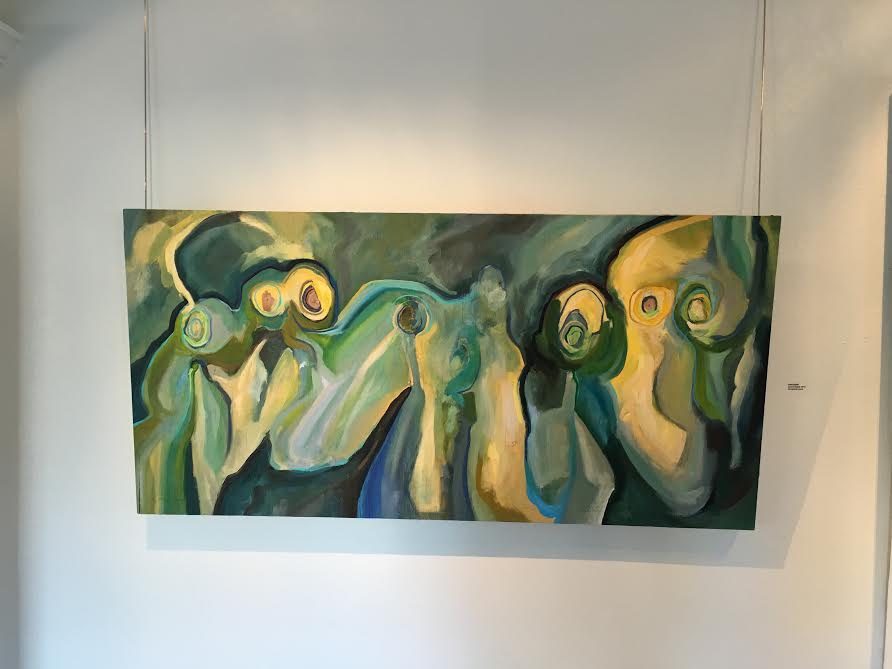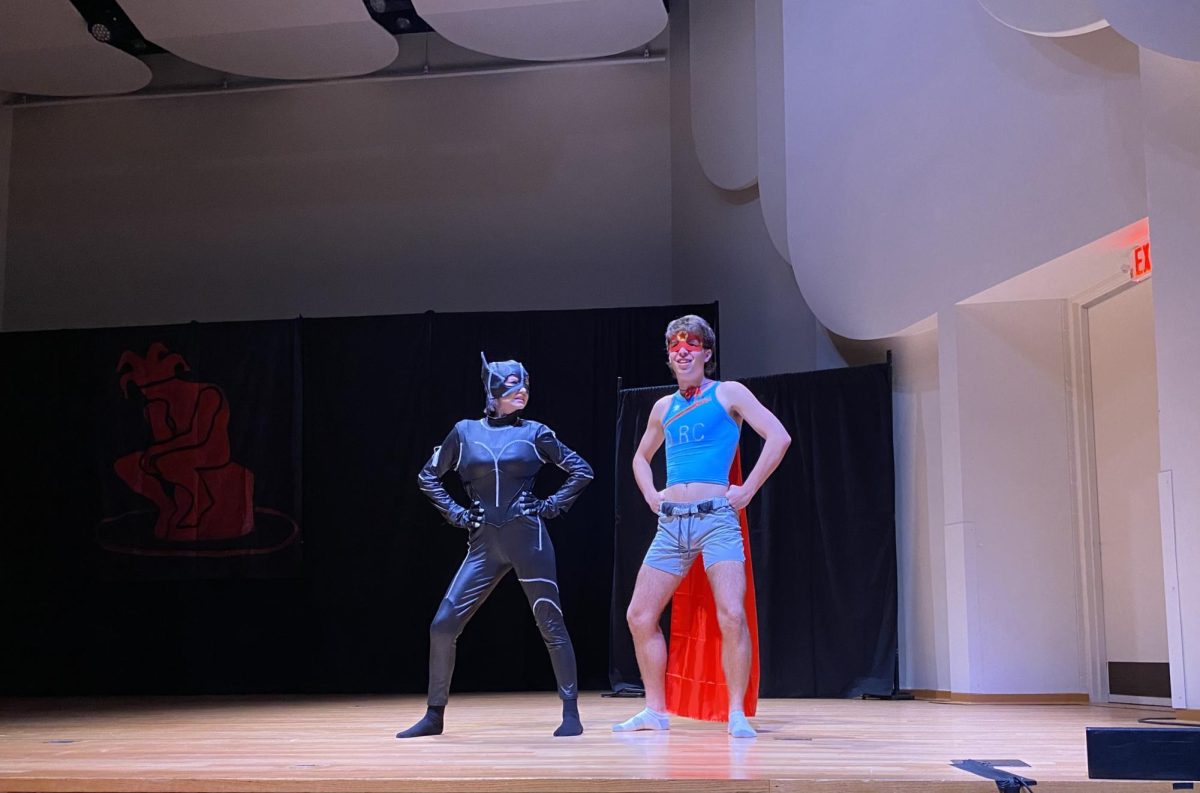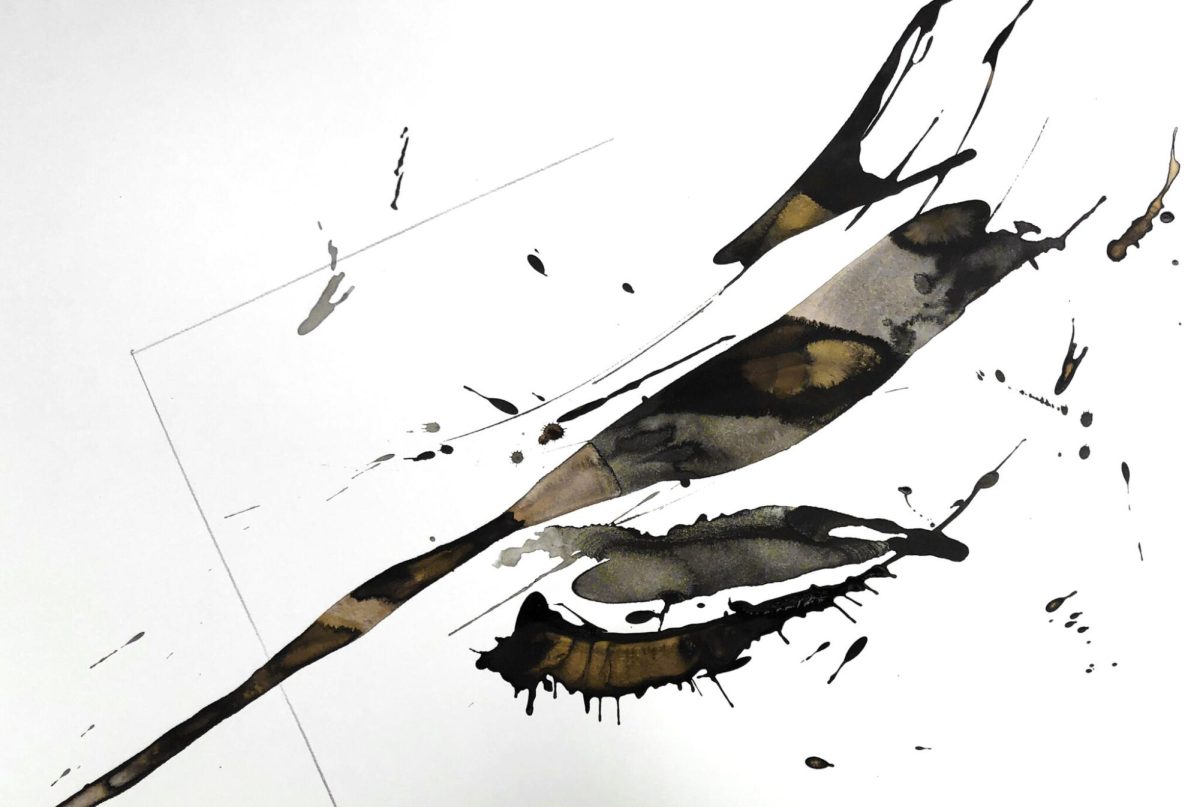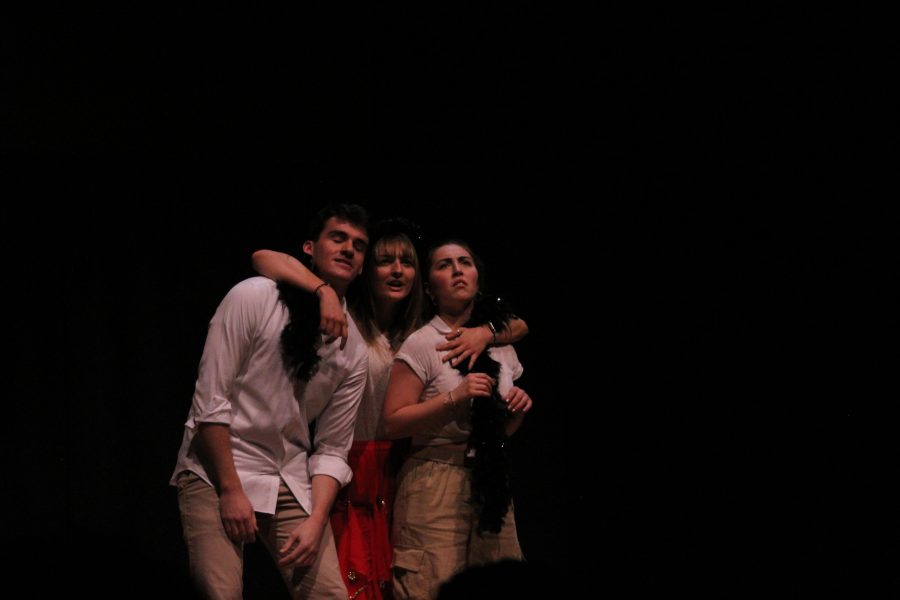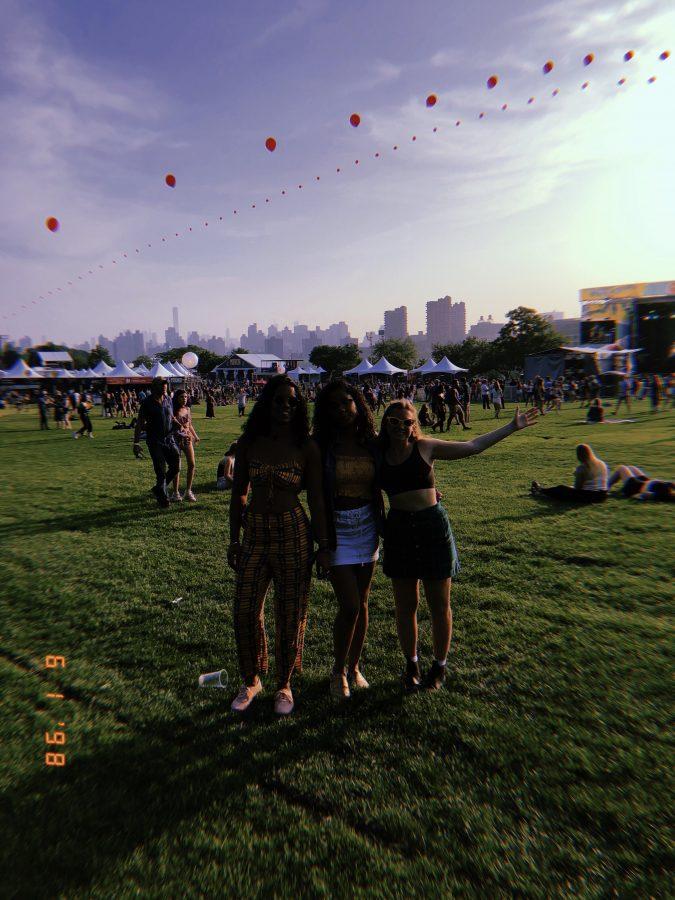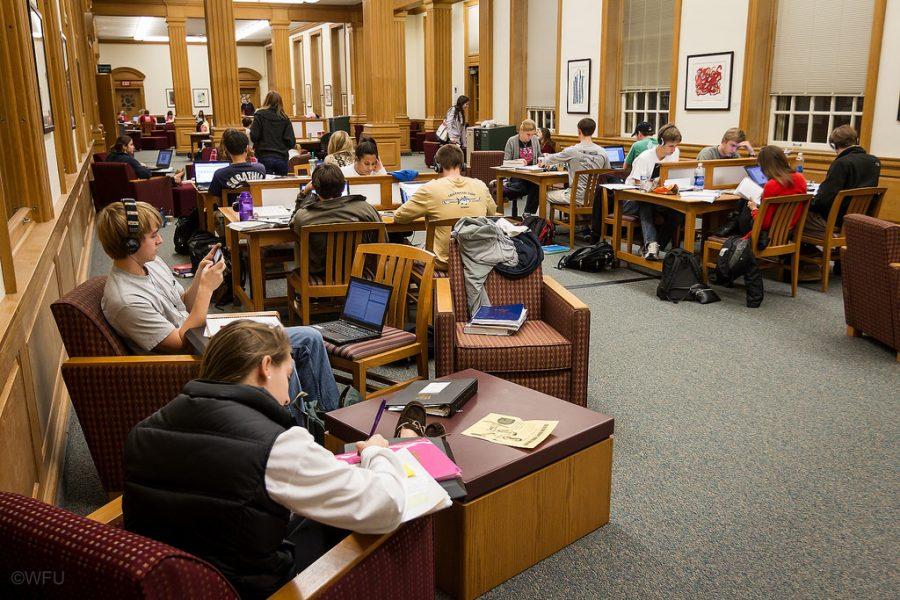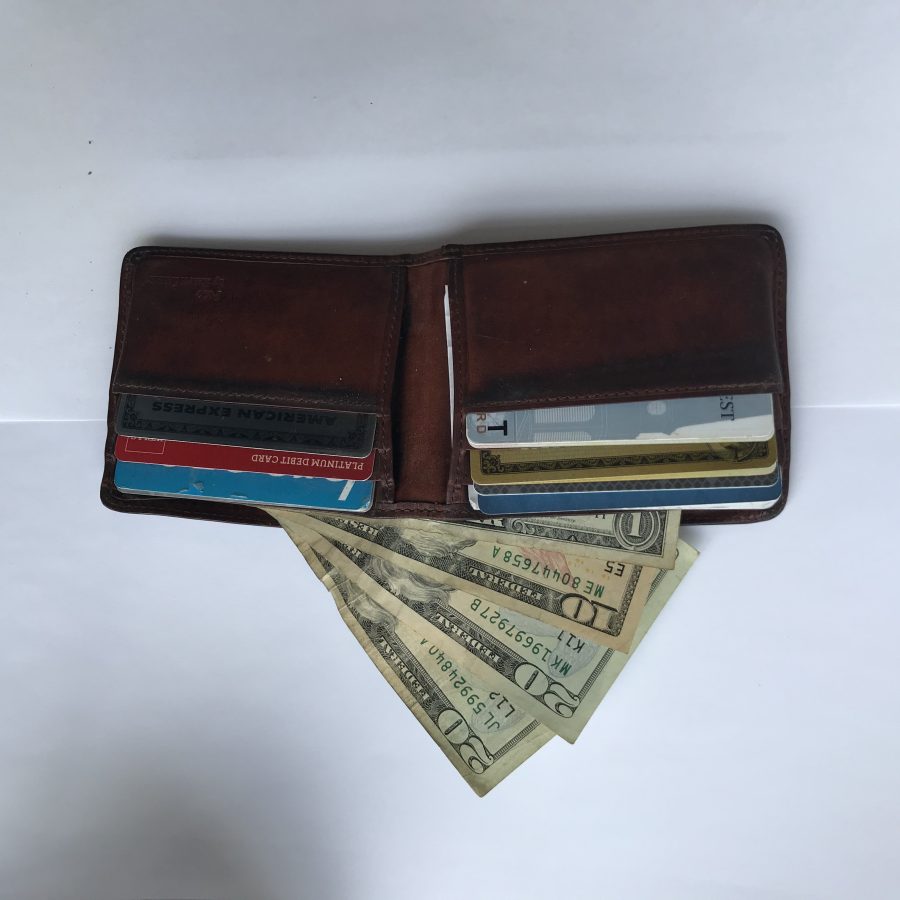The current exhibit at the START Gallery over in Reynolda Village appears, at first glance, to be like most other art exhibits: sparse walls splotched with colorful, abstract paintings.
A closer look, however, reveals something quite different.
Not only were all of the paintings done by students last semester, but they were also all done with creative materials. The usual oil paint on canvas doesn’t appear in this exhibit. Instead, you find oil paint on plywood or sheets of metal or authentic animal pelts.
That START Gallery, a Wake Forest University initiative, presents 12 to 15 exhibitions each year, all of which feature art by Wake Forest undergraduate students or alumni. The gallery’s mission is to give students the opportunity to experience the visual arts market, whether that be through featuring their art or giving them a role in the curating and presentation of the exhibits.
The current exhibit, called “Material Possibilities,” is comprised of work done by students in professor Page Laughlin’s Painting II/III class last semester.
“Because it was an advanced class, we didn’t have to go through the basics again,” said Lane Davis, a student in the class and an artist featured in the exhibit. “Instead, Page really encouraged us to experiment with alternative material and processes.”
The students presented their ideas to the class, and then Laughlin helped them develop and implement those ideas. Ultimately, though, Laughlin gave her students free reign over their projects.
“We had a lot of freedom with it,” Davis said. “We could choose what materials we wanted to use, how big we wanted it to be, everything.”
Because the students had the freedom to experiment, all of the paintings are different and unique to the student.
Davis has two paintings in the exhibit – both gentle swirls of oil paint on plywood. In one, she let the knots of the wood help determine her piece, with blues, greens and yellows moving around them.
Erin Tapp also created an abstract painting, although hers is much louder. Structured by thick, graffiti-inspired lines, Tapp painted her piece, “Roswell Summers,” with oil paint, oil sticks and spray paint.
Sarah Lewiecki incorporated fur into each of her pieces. In a series of paintings – “Decay 1,” “Decay 2,” “Mask 1” and “Mask 2” – Lewiecki painted various representations of women’s bodies on authentic animal pelts, which inevitably evokes the ideas of objectification. In Lewiecki’s other piece, “Blind,” two dozen or so eyes peer out from rivers of color, interspersed with tufts of animal fur.
Not all the pieces are abstract, however. Yolanda Qiu’s piece, “A Midsummer Night’s Dream,” is impressionistic, with soft orbs of yellow light illuminating a young boy and girl in a forest.
Aaron Lee’s piece, “Link 010010,” isn’t even on what you would typically think of as a canvas. Instead, painted chaotic splotches of color on six plates of glass, one of which is ordered by lines reminiscent of the inner workings of a computer.
For Tracy Pu’s two pieces, “Circulatory System” and Respiratory System,” she worked with oil paint on copper. In certain places, she oxidized the copper to create a striking teal color that burst through her murky reds and browns that represent the two most important systems in our bodies.
Each student brought his or her own experiences and personalities to their work. Each student worked with different materials, different canvases and different processes. In spite of this vast disparity, however, all the pieces harmonize surprisingly well in the gallery.
“The show manages to unify the collective pieces while simultaneously highlighting everyone’s unique artistic personalities and styles,” Davis said.
For many of the students in Laughlin’s class, this was the first time that their work had been shown in an exhibit.
“This is the first time my work has been displayed in the START gallery,” Davis said. “It was really exciting to see the work hung professionally in a gallery space that’s open to public viewing.”


